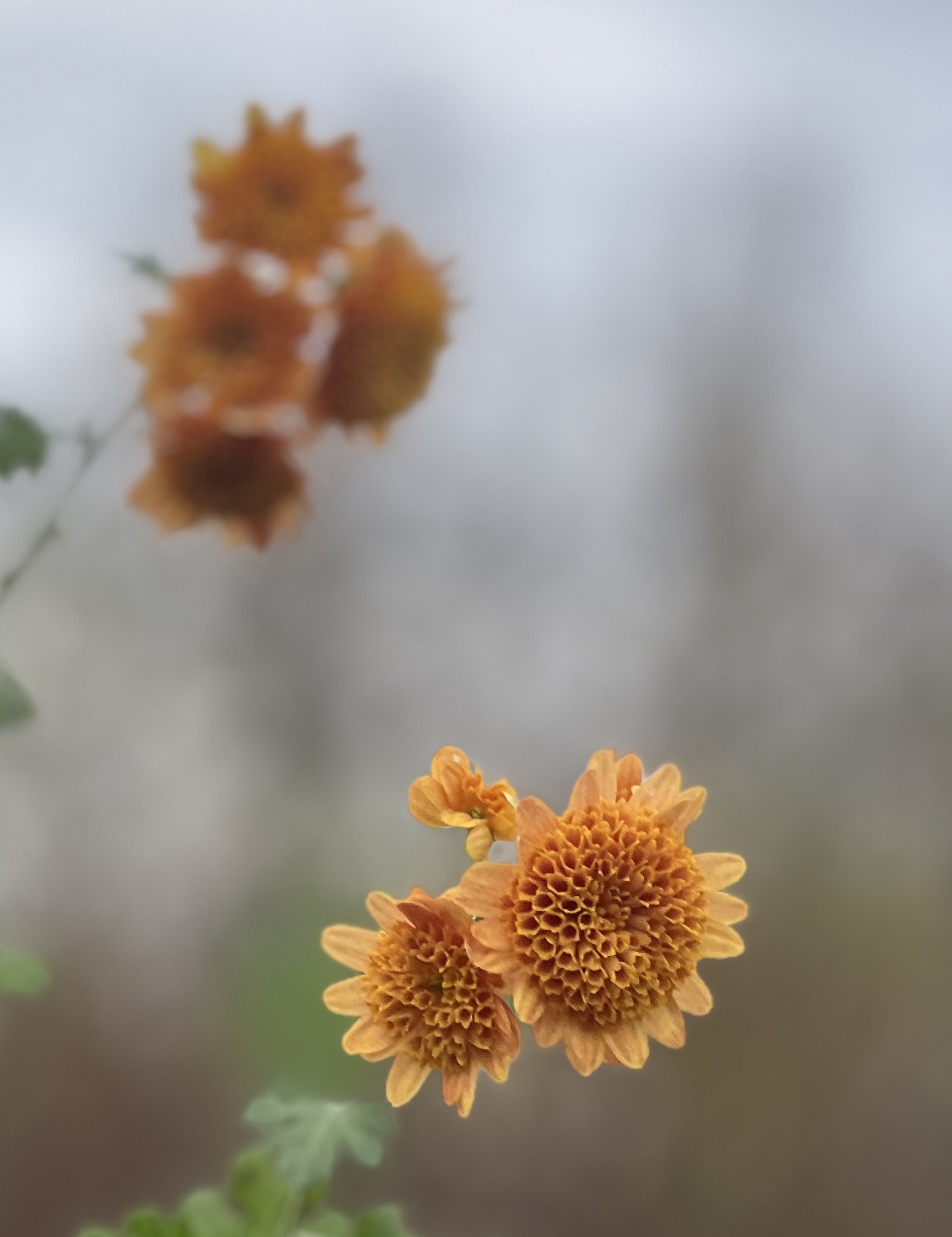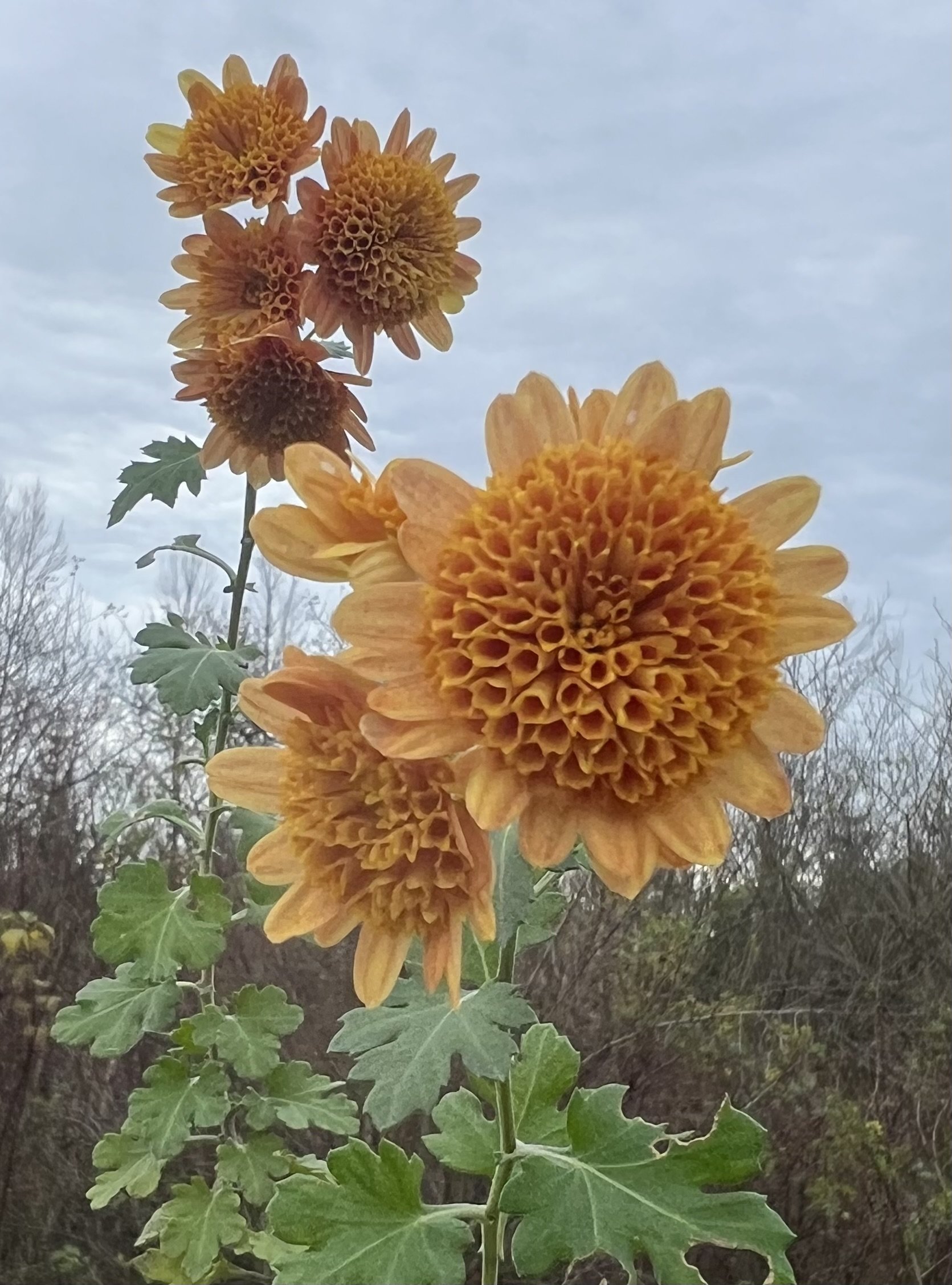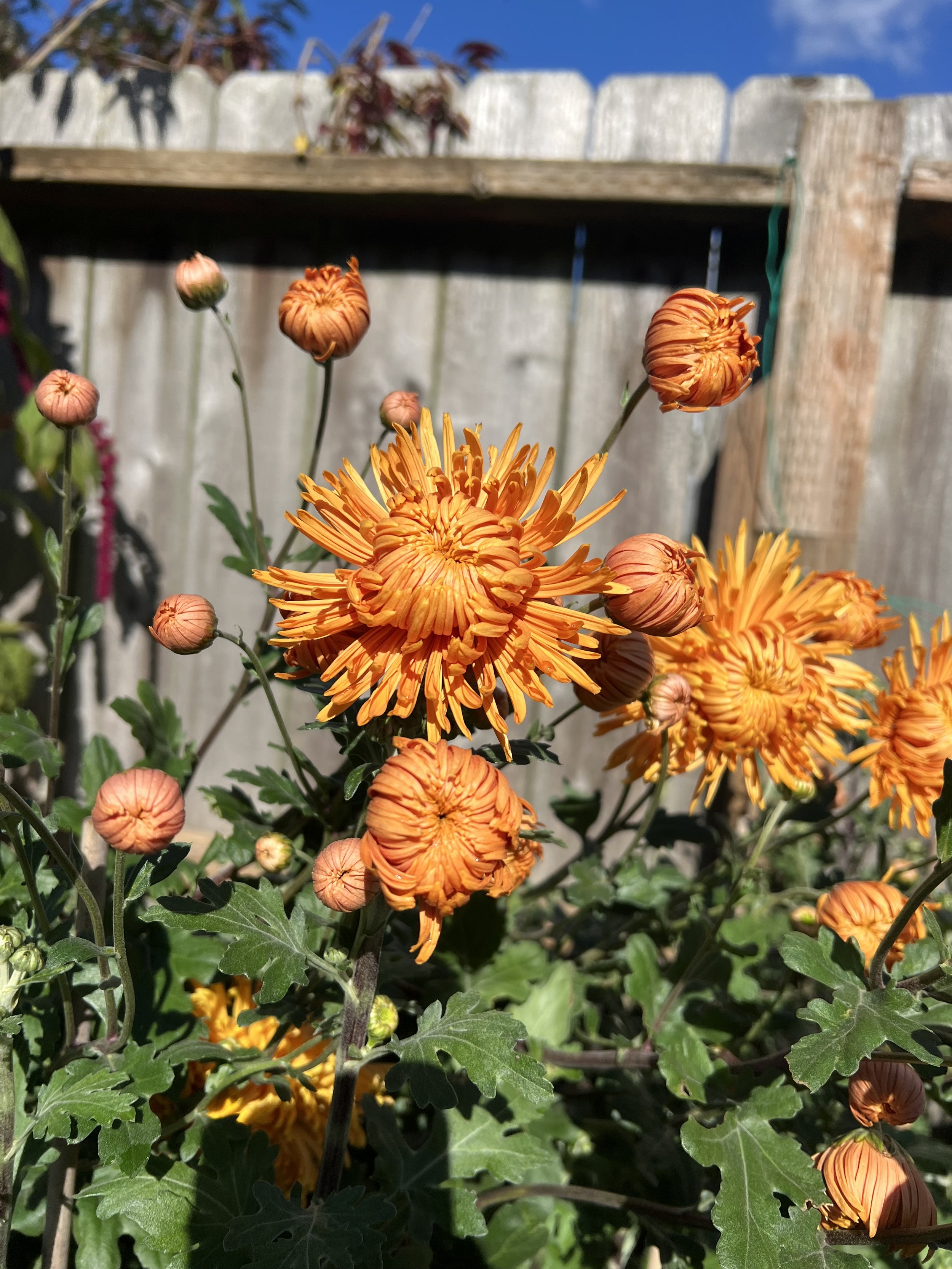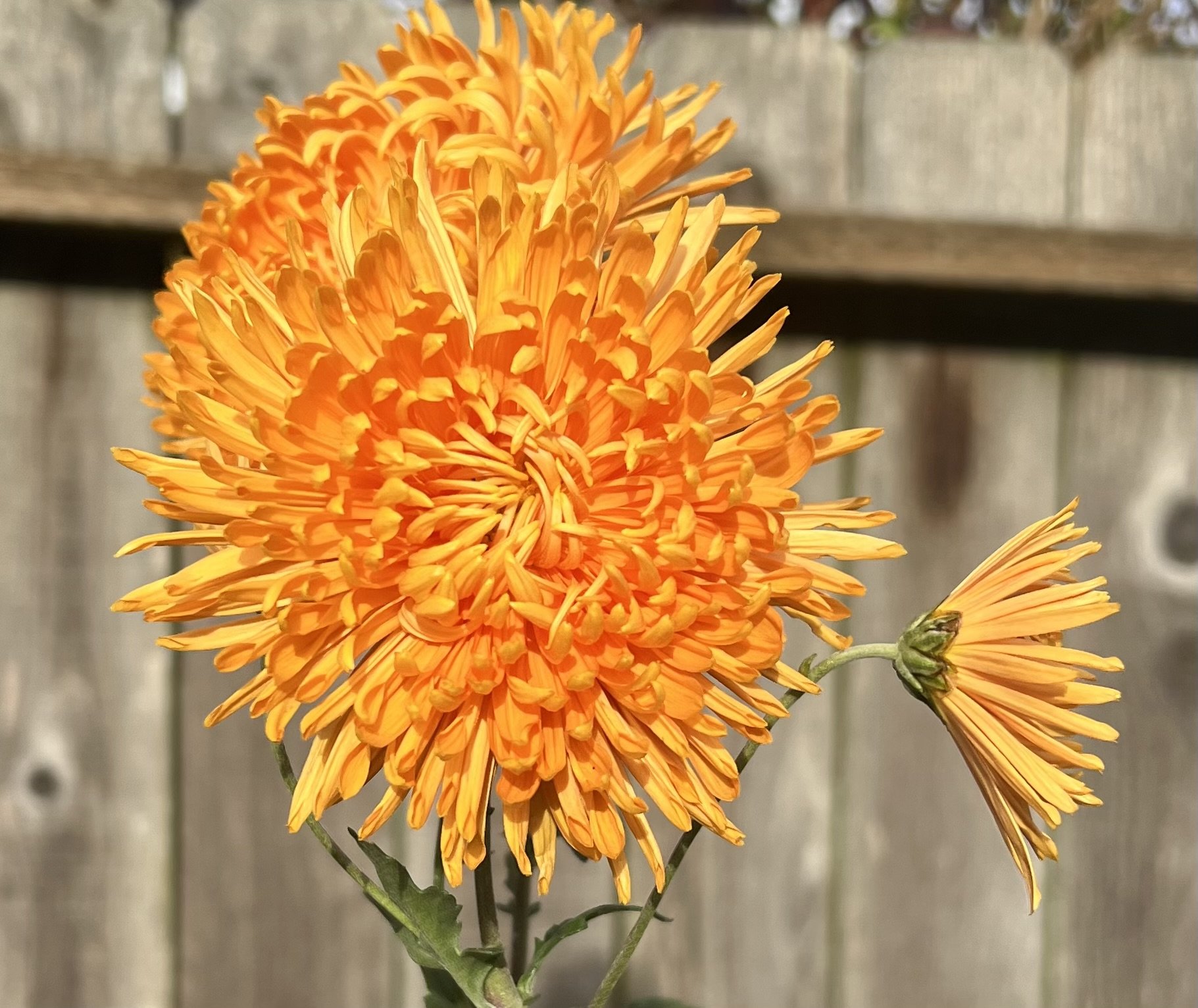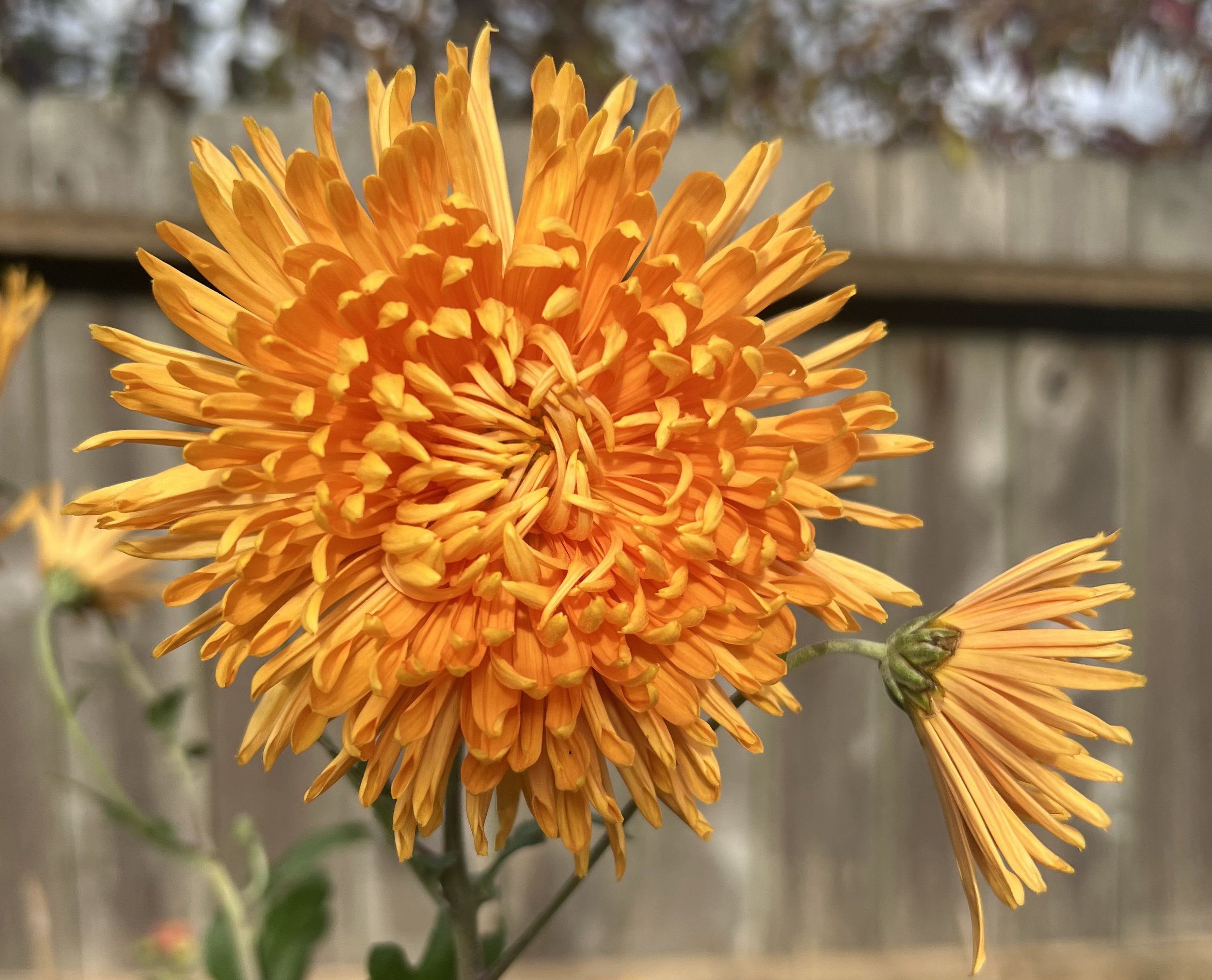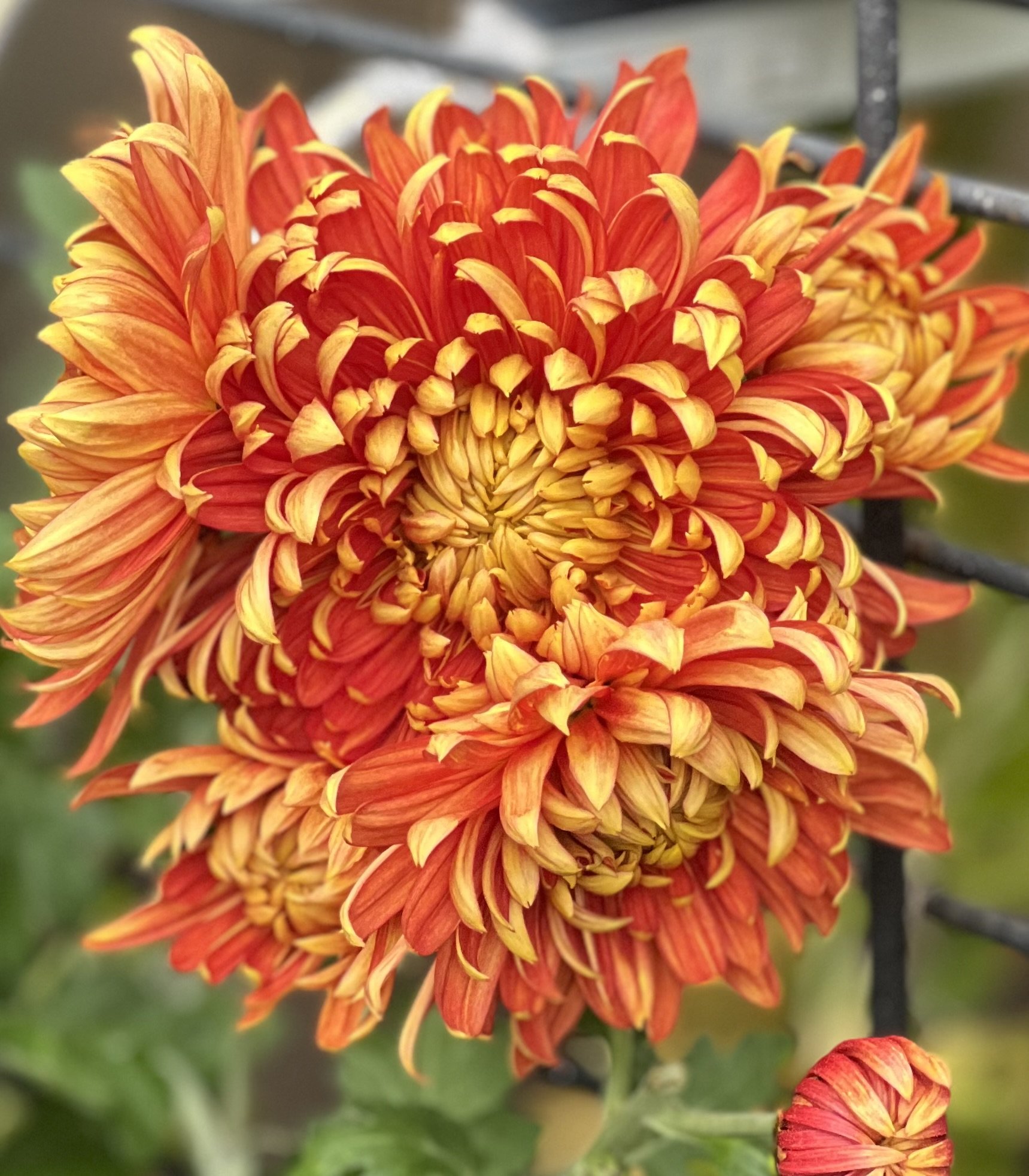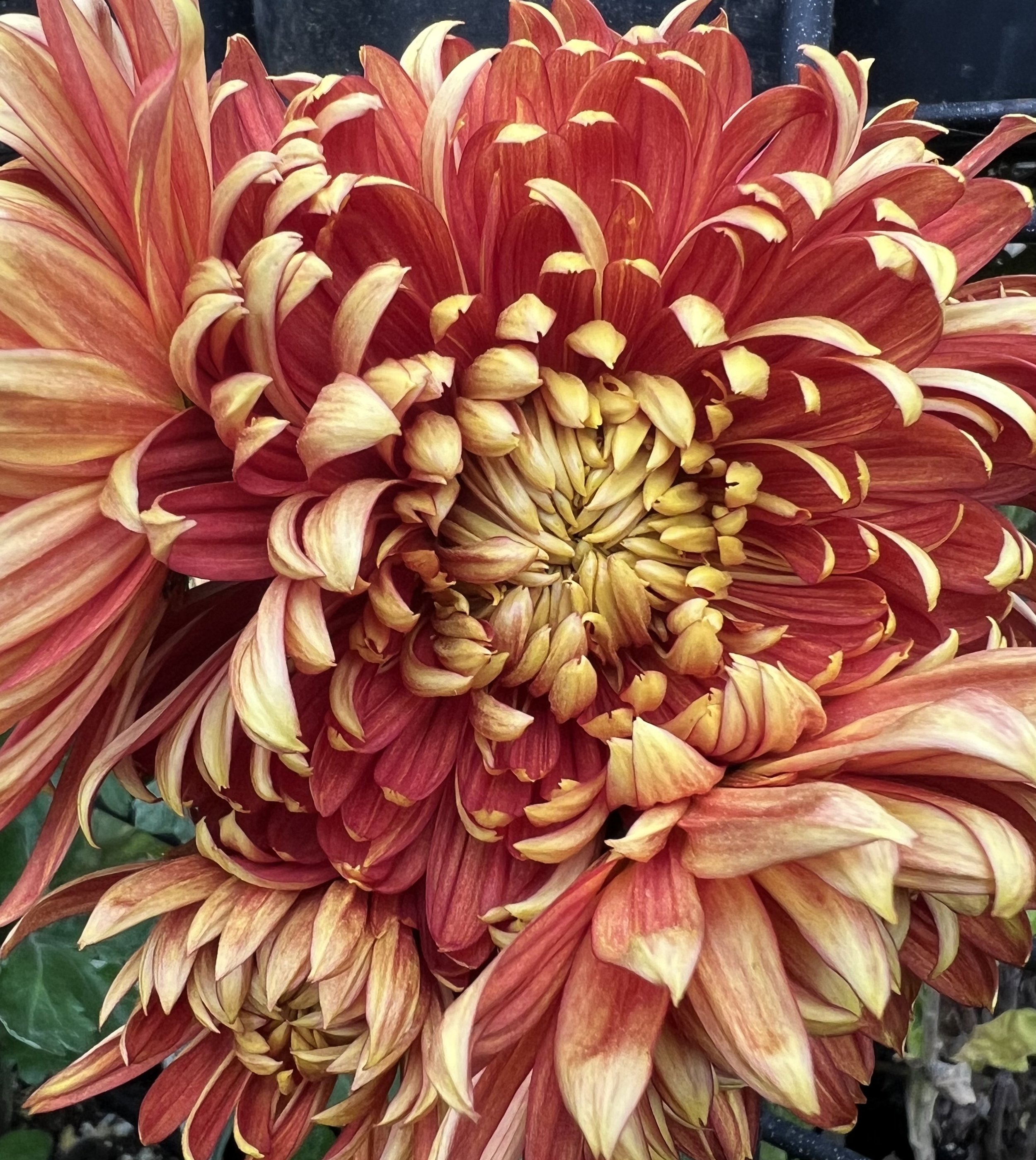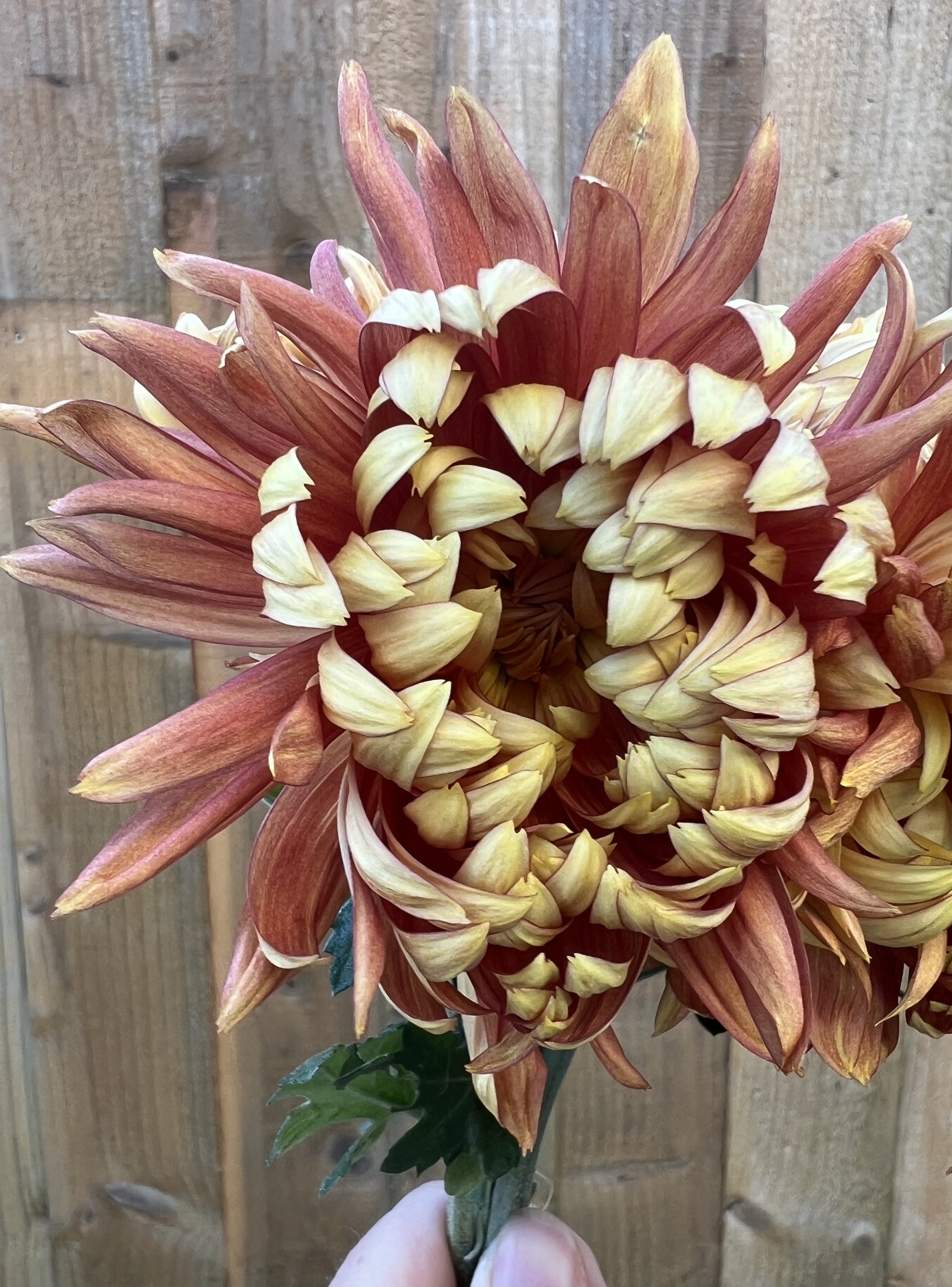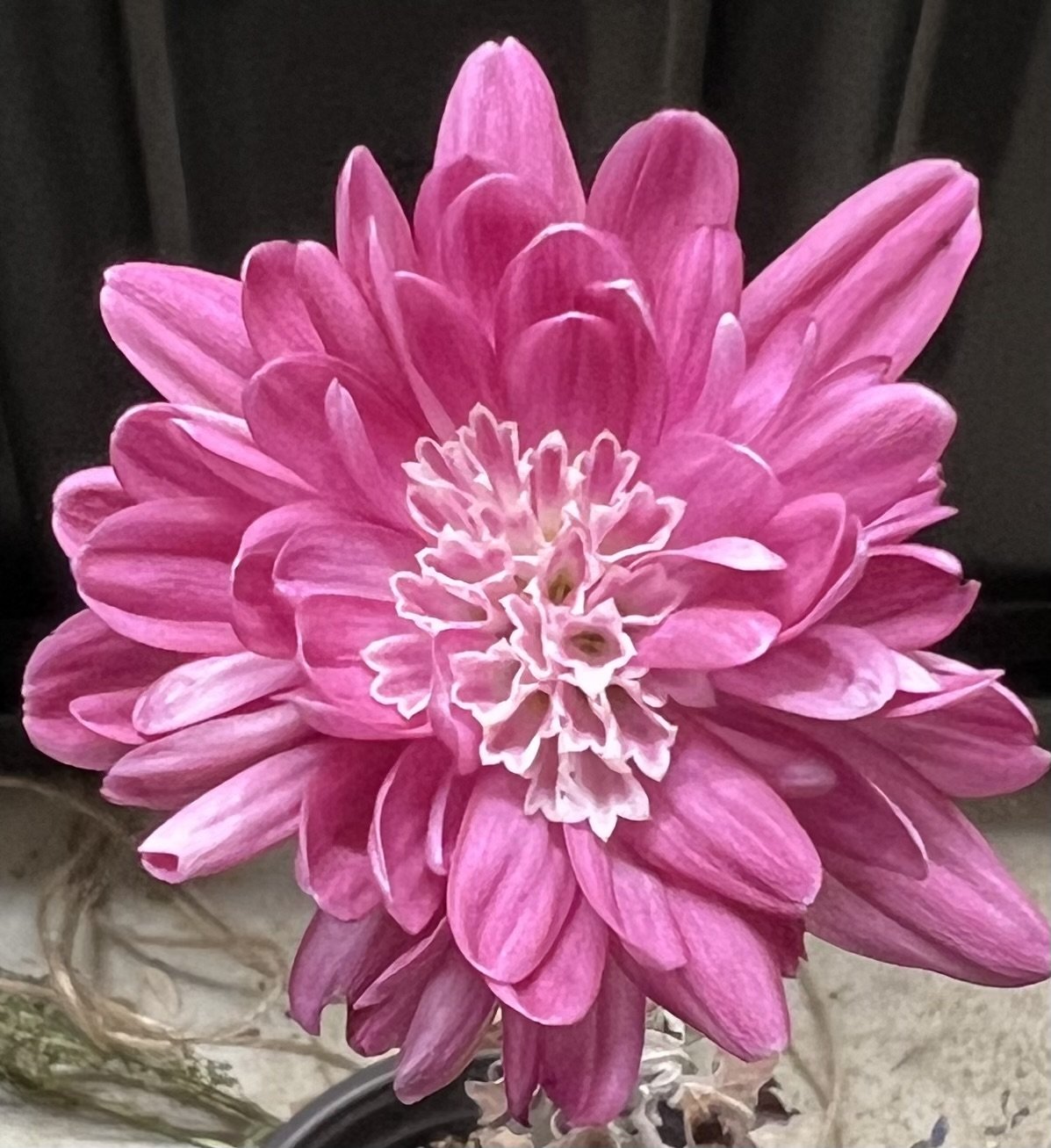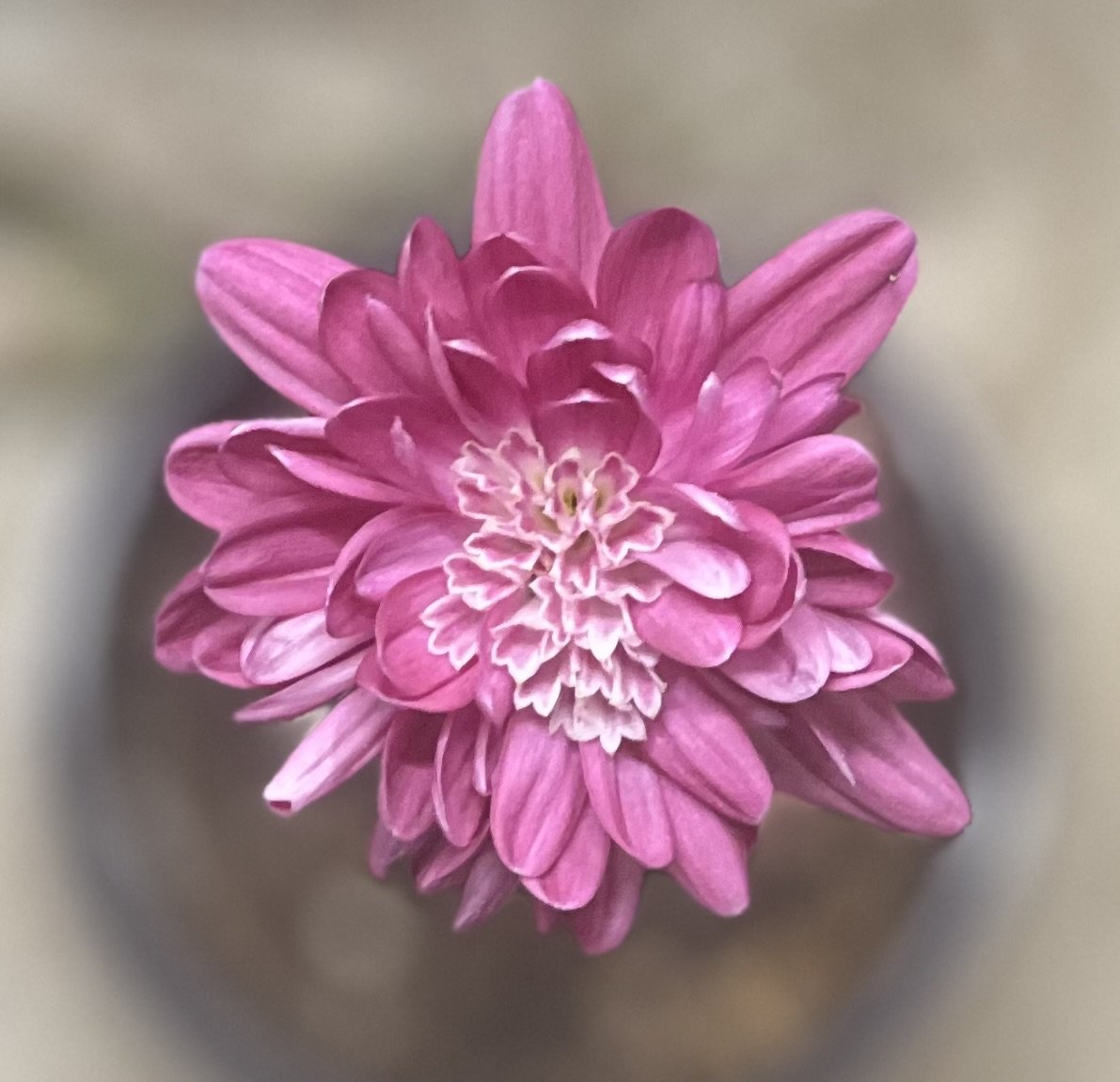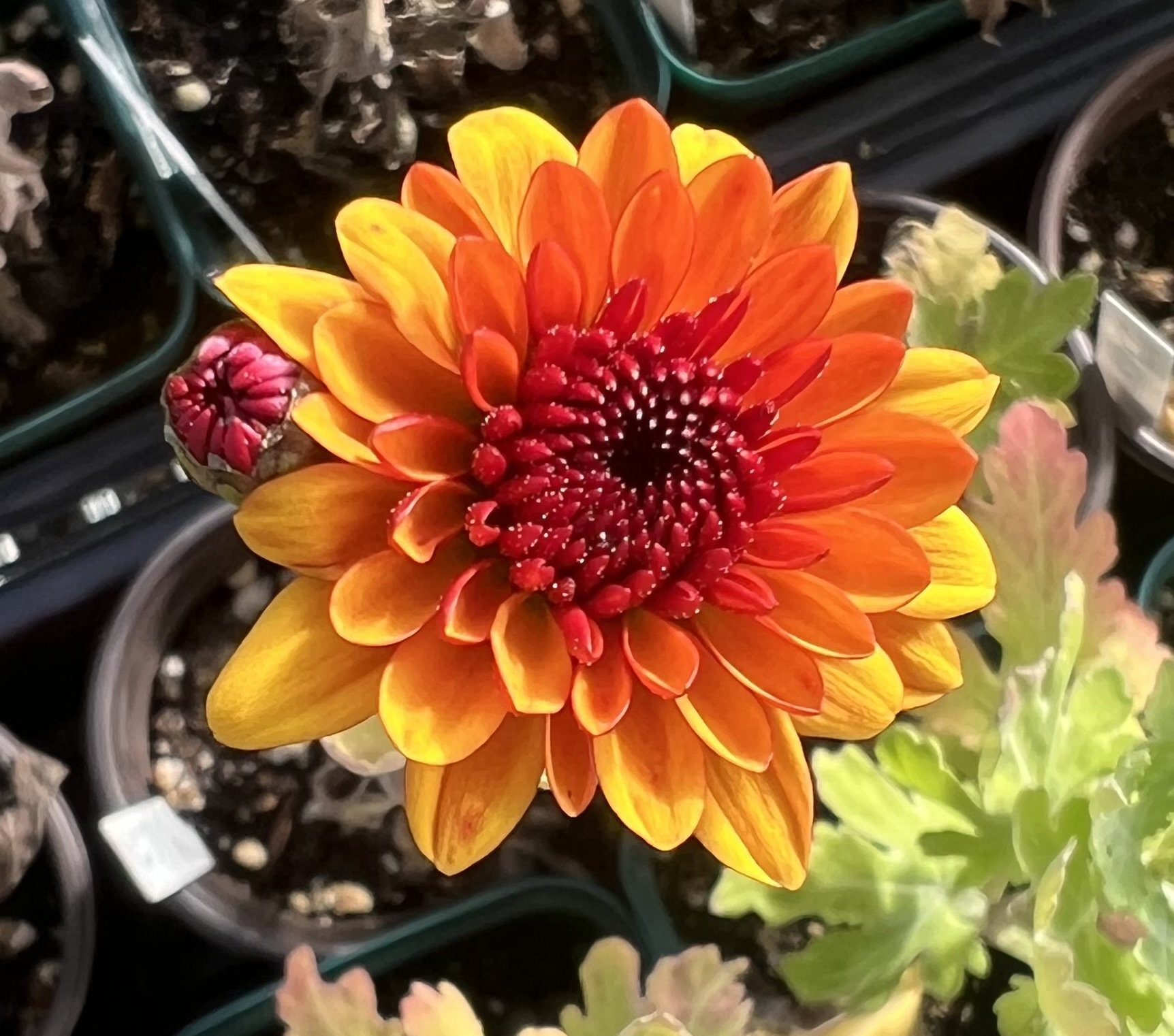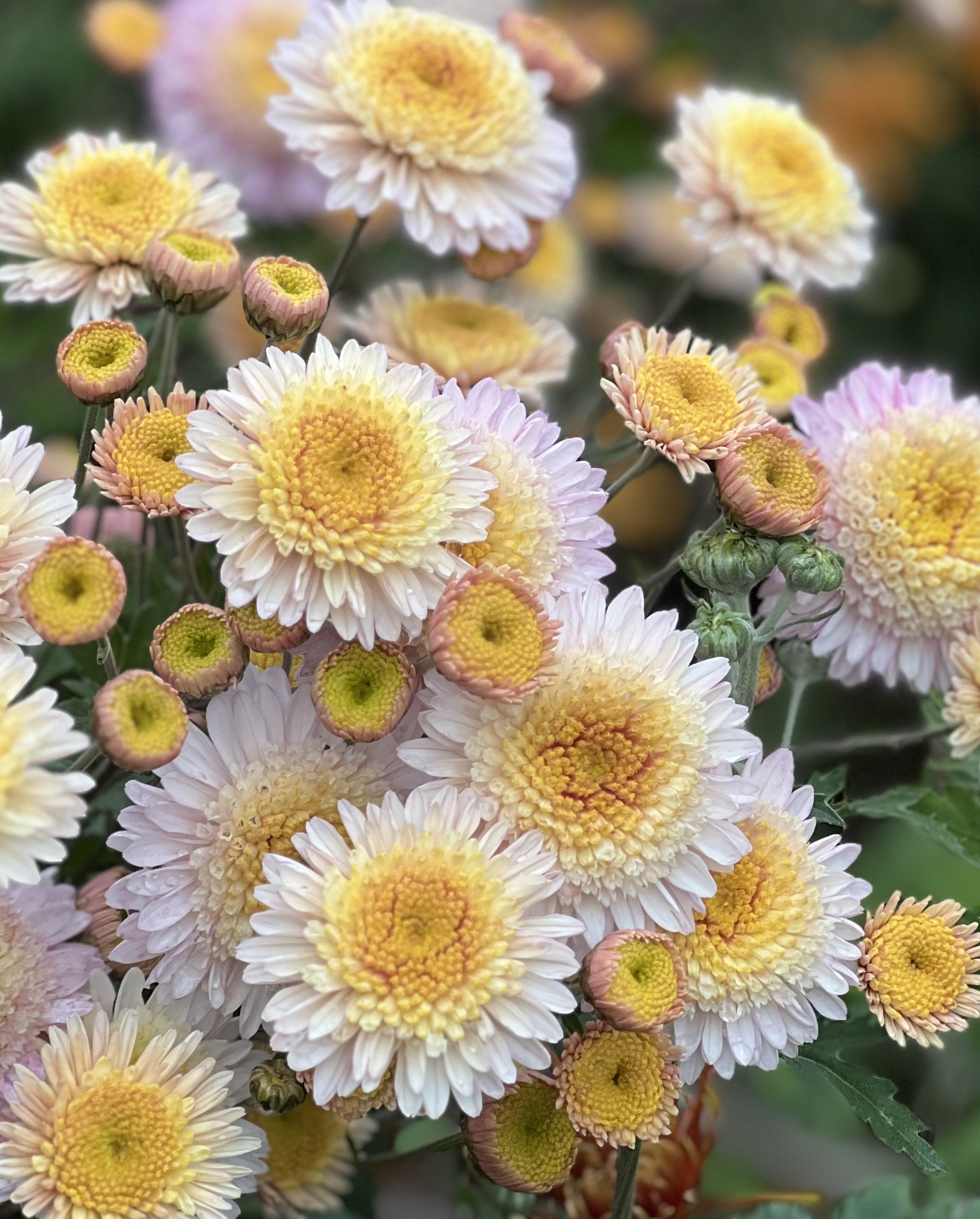 Image 1 of 3
Image 1 of 3

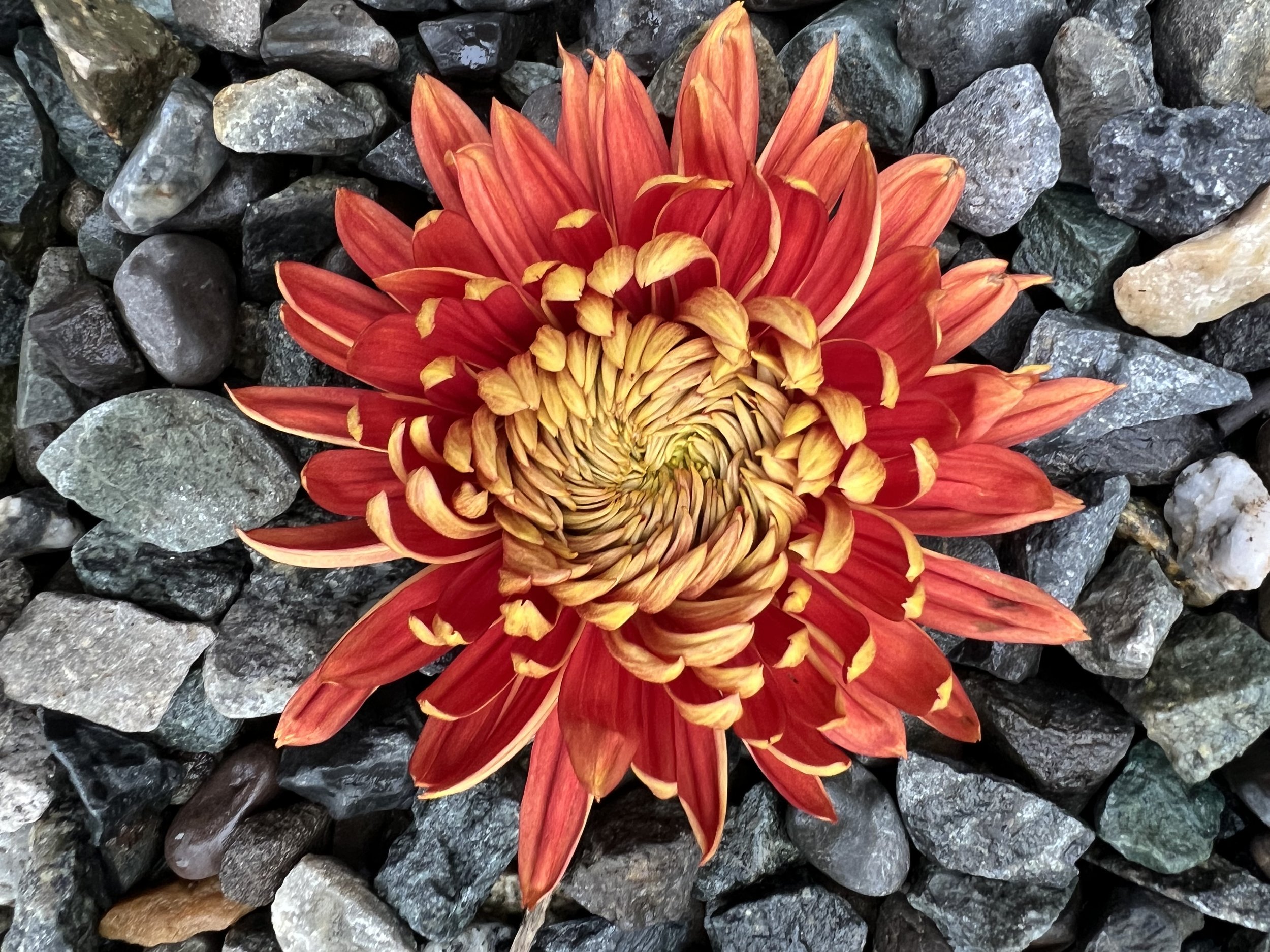 Image 2 of 3
Image 2 of 3

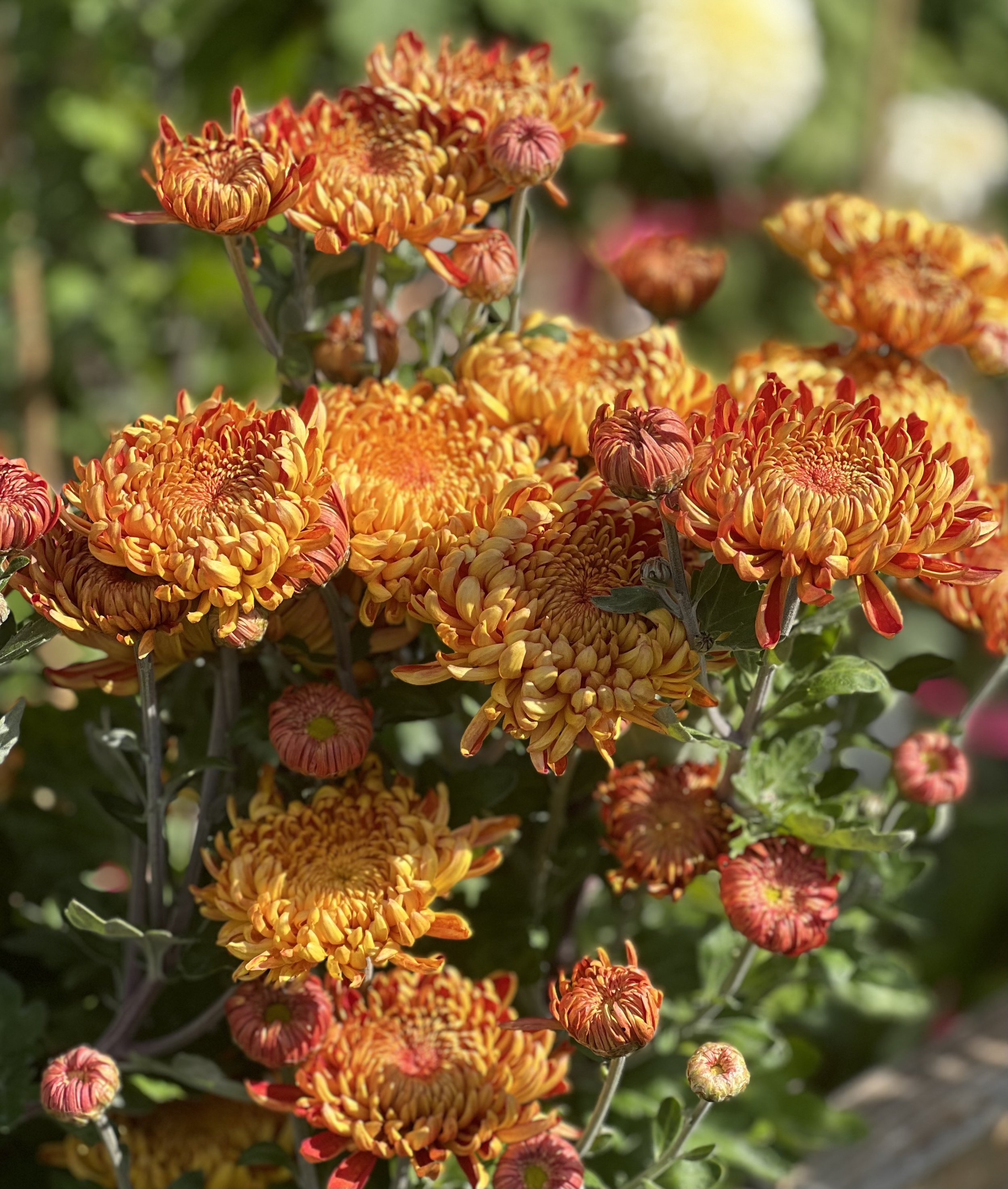 Image 3 of 3
Image 3 of 3




Chrysanthemum Care
When to Plant: After all danger of frost has passed it should be safe to plant your mums outside. You may start them in pots in a greenhouse before this time if you wish.
Soil Type: While mums are pretty tough they do like good draining soil. If growing in pots be sure there is good drainage in the pot. Be sure to avoid any soil labeled as “moisture control”, mums do not do well in this soil.
Planting: After receiving your rooted cutting it is best to plant it in a 3-4 inch pot to get a bit bigger and stronger before going outside. Plant your start at the current soil level or slightly deeper. Transplant your mum outside or into a bigger pot once you see root development at the bottom of the pot. Mums do not like to be root bound. Transplant your mum outside in the ground or a pot with 12 inches of circumference to grow. Crowding the plants may lead to powdery mildew issues in the fall. The plants look small now but can grow up to 3 feet tall in one season! Most chrysanthemums will benefit from staking or corralling.
Pinching Out: You will need to pinch out your mum plant. This means that once your plant is about 8-10 inches tall you should pinch out the growth to about 6 inches high. This encourages more plant growth with a bushier, stronger plant. Stop pinching out around the 4th of July so flowering buds may form.
Side Branches: For the varieties with large flower heads it is best to remove some of the side branches so more of the plants energy goes into those blooms. Since I grow mums for cut flowers I do not do this and the flower heads are still great in bouquets but may not look like a show flower.
Disbudding: Varieties with large flower heads do best with disbudding. This means keeping only one bloom per stem and removing new buds with your fingers when they are small. It is best to remove all but the center bud on a stem.
Fertilizing: Mums love to eat! Remember they are growing as tall as three feet in one season and putting out gorgeous blooms for you! This takes a lot of energy so be sure to feed your mums. Using a nice slow release fertilizer that is 14-14-14 does well at planting time with WEEKLY liquid fertilizer until you see flower buds. After you begin to see buds, no fertilizer is needed.
Harvesting: Mums do not continue to open once they are cut so it is best to wait until the flower is fully open before harvesting. Mums have strong straight stems for the most part and can last over 2 weeks in a vase!
Insects: Aphids love mums. It’s a bummer but they can be easily taken care of with a stiff spray of the hose. Once the aphids are knocked off the plant the can’t get back up it. My favorite fighter of aphids is beneficial bugs. I order Green Lacewing larva from Sound Horticulture (they ship right to your door) and release them into my mums every 3-4 weeks during the growing season. The larvae look like adorable little crocodiles eating the annoying aphids. Just remember a pest infestation can get out of hand quickly (did you know aphids are born pregnant!?!?) so begin treatment as soon as you see a problem.
Winter Care: These mums are not very winter hardy. It is recommended to dig up your plants before frost, cut the growth to 1-2 inches above the ground or pot and move the plant to a garage, basement or greenhouse to prevent freezing. Allow the plant to go dormant. I may put a small amount of water in each pot every 3-4 weeks but for the most part, I kinda forget about them. I store my mums in one gallon pots in my unheated greenhouse and they do pretty well. I do not have severe winters though so your needs may differ. In the spring you will see new growth pushing up and it’s time to start the cycle all over again!
When to Plant: After all danger of frost has passed it should be safe to plant your mums outside. You may start them in pots in a greenhouse before this time if you wish.
Soil Type: While mums are pretty tough they do like good draining soil. If growing in pots be sure there is good drainage in the pot. Be sure to avoid any soil labeled as “moisture control”, mums do not do well in this soil.
Planting: After receiving your rooted cutting it is best to plant it in a 3-4 inch pot to get a bit bigger and stronger before going outside. Plant your start at the current soil level or slightly deeper. Transplant your mum outside or into a bigger pot once you see root development at the bottom of the pot. Mums do not like to be root bound. Transplant your mum outside in the ground or a pot with 12 inches of circumference to grow. Crowding the plants may lead to powdery mildew issues in the fall. The plants look small now but can grow up to 3 feet tall in one season! Most chrysanthemums will benefit from staking or corralling.
Pinching Out: You will need to pinch out your mum plant. This means that once your plant is about 8-10 inches tall you should pinch out the growth to about 6 inches high. This encourages more plant growth with a bushier, stronger plant. Stop pinching out around the 4th of July so flowering buds may form.
Side Branches: For the varieties with large flower heads it is best to remove some of the side branches so more of the plants energy goes into those blooms. Since I grow mums for cut flowers I do not do this and the flower heads are still great in bouquets but may not look like a show flower.
Disbudding: Varieties with large flower heads do best with disbudding. This means keeping only one bloom per stem and removing new buds with your fingers when they are small. It is best to remove all but the center bud on a stem.
Fertilizing: Mums love to eat! Remember they are growing as tall as three feet in one season and putting out gorgeous blooms for you! This takes a lot of energy so be sure to feed your mums. Using a nice slow release fertilizer that is 14-14-14 does well at planting time with WEEKLY liquid fertilizer until you see flower buds. After you begin to see buds, no fertilizer is needed.
Harvesting: Mums do not continue to open once they are cut so it is best to wait until the flower is fully open before harvesting. Mums have strong straight stems for the most part and can last over 2 weeks in a vase!
Insects: Aphids love mums. It’s a bummer but they can be easily taken care of with a stiff spray of the hose. Once the aphids are knocked off the plant the can’t get back up it. My favorite fighter of aphids is beneficial bugs. I order Green Lacewing larva from Sound Horticulture (they ship right to your door) and release them into my mums every 3-4 weeks during the growing season. The larvae look like adorable little crocodiles eating the annoying aphids. Just remember a pest infestation can get out of hand quickly (did you know aphids are born pregnant!?!?) so begin treatment as soon as you see a problem.
Winter Care: These mums are not very winter hardy. It is recommended to dig up your plants before frost, cut the growth to 1-2 inches above the ground or pot and move the plant to a garage, basement or greenhouse to prevent freezing. Allow the plant to go dormant. I may put a small amount of water in each pot every 3-4 weeks but for the most part, I kinda forget about them. I store my mums in one gallon pots in my unheated greenhouse and they do pretty well. I do not have severe winters though so your needs may differ. In the spring you will see new growth pushing up and it’s time to start the cycle all over again!

